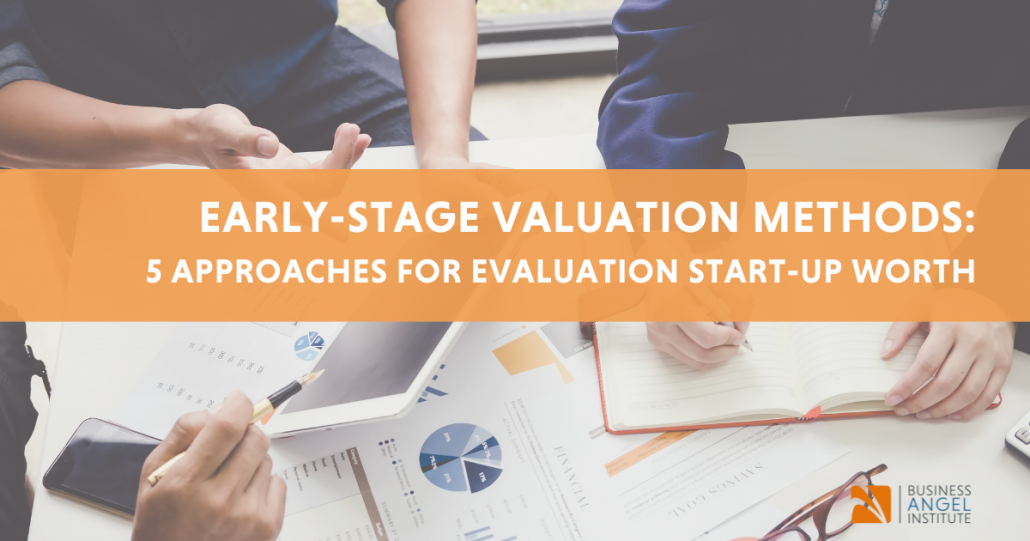Early-Stage Valuation Methods: 5 Approaches for Evaluating Start-Up Worth
In the long-term game of investment, without any doubt proper valuation allows for the best approach into deciding whether to invest in a start-up.
Proper valuation goes much further than a number of what the business is “worth”. It furthermore provides a baseline for the future, measures progress and identifies gaps by utilizing key performance indicators (KPIs), and ultimately helps manage a business.
One of the key things necessary to understand in relation to valuation is the difference between pre- and post-money valuation. Pre-money refers to the value of the start-up prior to receiving any investments. Post-money refers to the value of the start-up after receiving an investment. For example, if you have a pre-money investment of €4 million and raise €2 million, your post-money valuation is €6 million. This is important to know as you are giving up 33.33% (or 1/3) equity to an investor (€2 million / €6 million).
We have identified 5 different valuation methods for evaluating early-stage start-up worth below.
The Berkus Method
The Berkus Method, named after its creator, Dave Berkus, seeks to address the difficulty of quantifying unquantifiable aspects by employing a blend of qualitative and quantitative factors. It calculates valuation based on five key elements: a valuable business model (base value), an available prototype (reducing technology risks), the abilities of the founding or management team (reducing implementation risks), any strategic relationships (reducing market risks), and existing customers or first sales (reducing production risks).
Each key element is assigned a monetary value with a maximum of EUR 500.000 per element. That allows a maximum pre-revenue valuation of EUR 2 to 2.5 million. By adjusting the parameters and modifying the maximum added values, you can observe changes in pre- and post-money valuations.
The Payne Scorecard Method
The Payne Scorecard Method, developed by Bill Payne, valuates start-ups by comparing them to other start-ups at the same stage within a particular geographic region and industry, setting a benchmark or standard of pre-seed or early-seed companies.
First, an average valuation of similar startups in the region is calculated. Second, weights are assigned to certain factors (e.g. Management Team, Timing of the Opportunity, Product / Technology, etc.). Finally, scores are assigned to the previously defined categories. The standard baseline assumption is set a 100%, so any score above indicates an assessment higher than average while any score below indicates an assessment lower than average. Each assigned score is multiplied by their respective weight to calculate each factor. Add up each factor to yield the final ratio, which compares the startup to the determined average.
The Venionaire Method
The Venionaire, or Rating Method, developed by Venionaire Capital AG, valuates start-ups via a straightforward scorecard approach. There are six essential elements: Team, Market, Product & Business Model, Technology, Scalability and KPIs. Each element is assigned a score from 1 to 5. This score is then multiplied by its corresponding stage-relevant weight. The sum of all these factors produces a rating: VAAA (Very Strong Company, top 5%), VAA (Strong Company, top 10%), VA (Above Average, score above 3.5), V (Average, aligning with comparable start-ups), VR (Very Risky, with weak key value drivers), and ER (Extremely Risky, where it is advisable not to invest).
The VC Method
The VC, or Venture Capital, Method valuates early-stage, pre-revenue companies by anticipating a specific rate of return on investments. This is achieved by a simple equation, expressed as Post-money Valuation = Exit Value / Expected Return on Investment (RoI).
The Exit Value is the estimated value the company will be sold for in the future. In the VC Method, it is typically calculated as a multiple of the company’s revenues in the year of sale. For early-stage, pre-revenue start-ups, EBIT multiples usually aren’t applicable. RoI is often expressed as a multiple of the initial investment. The target RoI for early-stage companies is quite high, often aiming for a return of 10x. By plugging in these values into the equation, the post-money valuation is returned.
The First Chicago Method
The First Chicago Method, created by the venture capital arm of the First Chicago bank, values dynamic growth companies via the integration of aspects of market-oriented and fundamental analytical methods in 4 steps.
Step 1 is to outline various future scenarios for the company, after that sorting them into best-case, mid-case, and worst-case. Each scenario thus requires a thorough financial forecast, including revenues, earnings, cash flows, and the exit horizon. The second step calculates the divestment price for each scenario using multiples. Step 3 calculates the required return and with this in mind establishes the valuation for each scenario. Step 4 assesses the probabilities of each scenario and calculates the weighted sum, returning a final valuation.
With all this in mind check out our Certified Business Angel Program ! Learn everything you need to know to become a savvy business angel!
If you are interested in learning more about the five different valuation methods or valuating a start-up, check out DealMatrix, a fact-based startup valuation software that brings startups and investors together.



